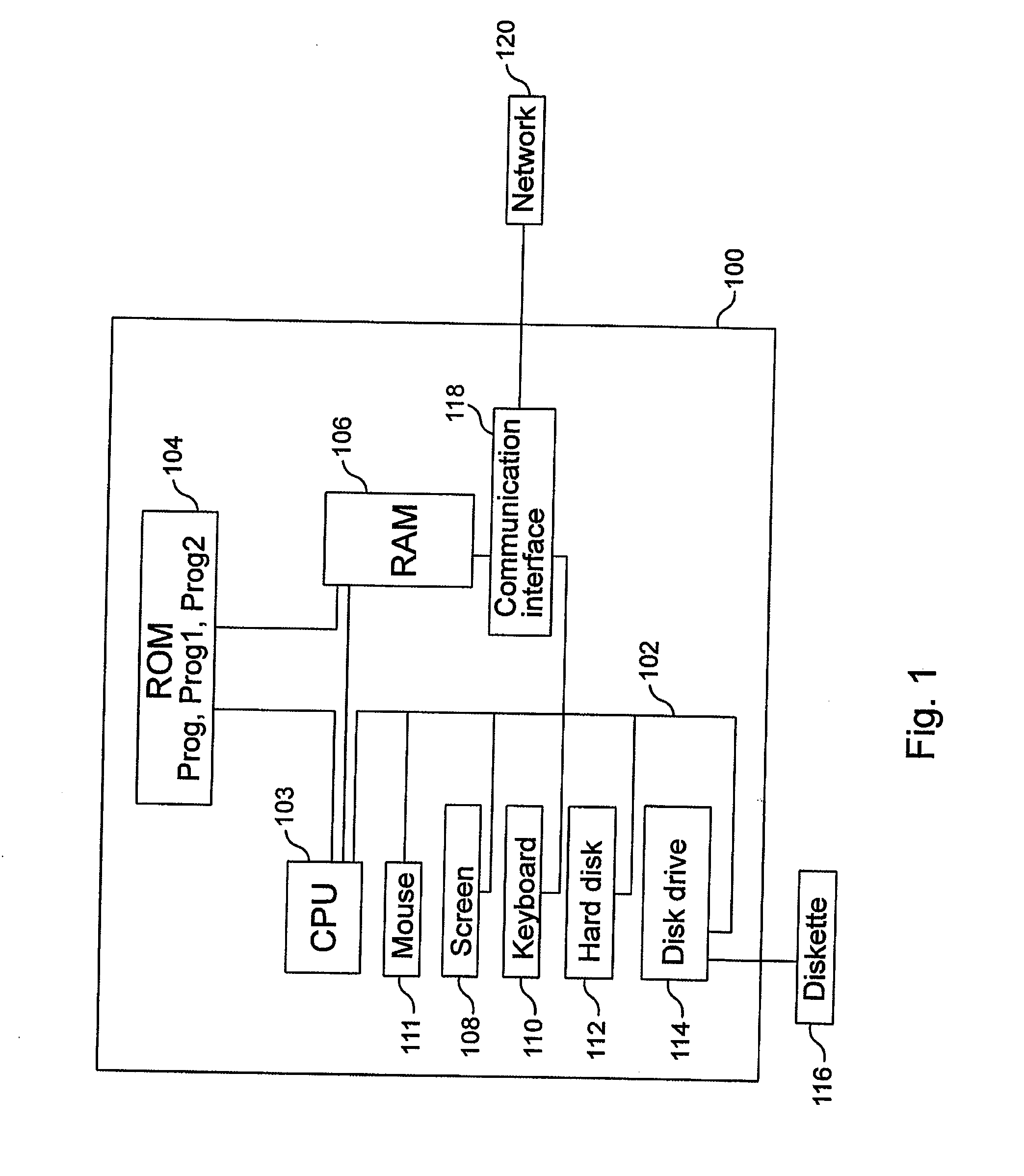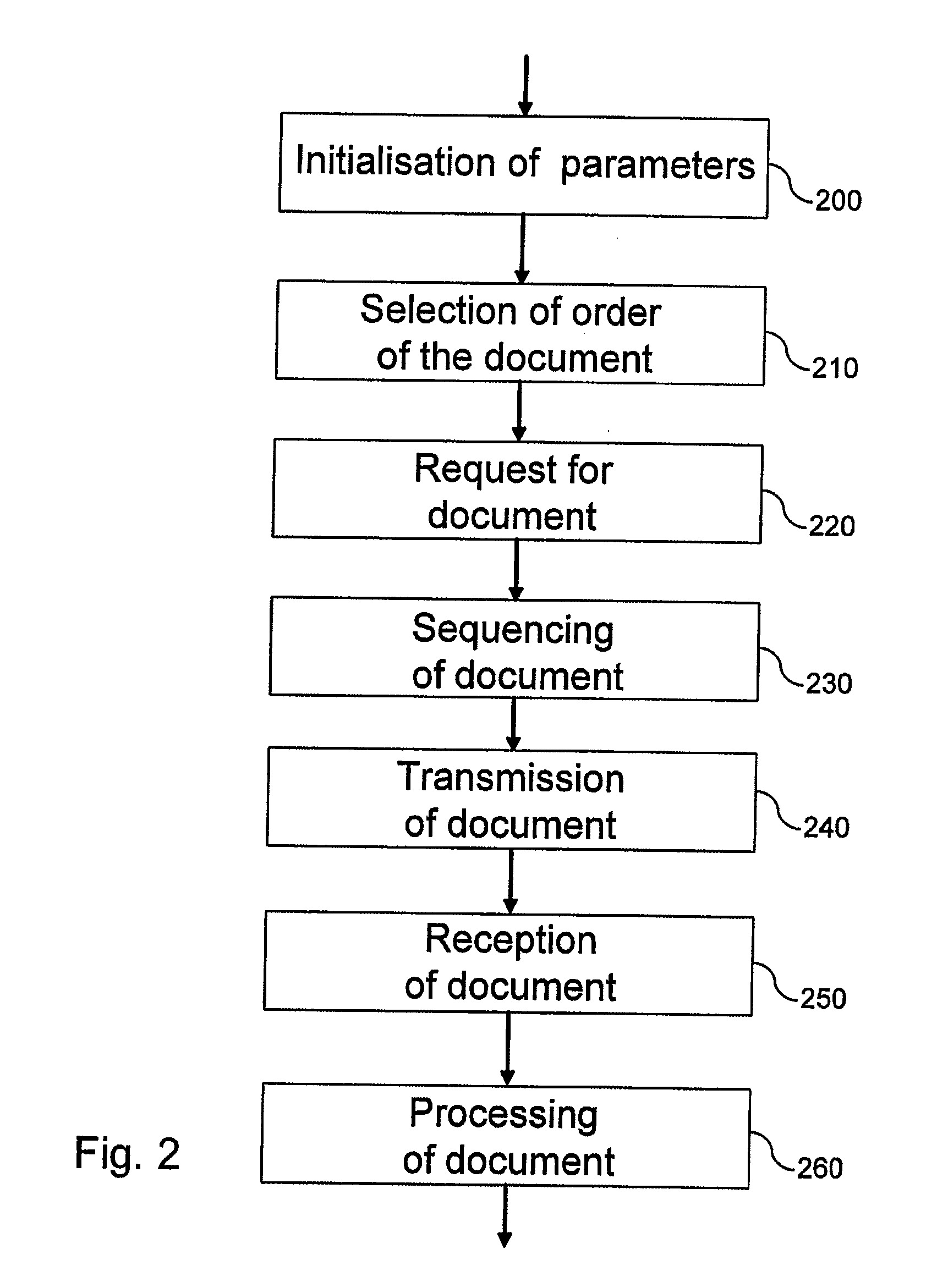Methods and devices for optimizing the processing of XML documents
a technology of xml documents and optimization methods, applied in the field of documents, can solve the problems of large amount of memory and calculation resources required for its implementation, management requires significant memory and calculation resources, and achieve the effect of optimizing the processing of xml documents
- Summary
- Abstract
- Description
- Claims
- Application Information
AI Technical Summary
Benefits of technology
Problems solved by technology
Method used
Image
Examples
Embodiment Construction
[0118]According to the invention, when a client wishes to access the components of an XML document or certain components of an XML document, he determines the processing mode of the XML document and requests the document in its corresponding version, “backward” version or “forward” version. If the client needs the document in its entirety, he preferably requests the “backward” version of the document. If the client wishes to recover only a subset of the document, he preferably requests the “forward” version. It often happens that a client wishes to recover only a subset of components, or even a single component, of a document, for example when he accesses documents pointed to by functions of the xs:import or wsdl:import type, when he is analyzing WS-Discovery messages giving a reference to a particular service or when a code generator wishes to generate the code of a particular interface.
[0119]When the server receives a request for an XML document in a particular version, it accesse...
PUM
 Login to View More
Login to View More Abstract
Description
Claims
Application Information
 Login to View More
Login to View More - R&D
- Intellectual Property
- Life Sciences
- Materials
- Tech Scout
- Unparalleled Data Quality
- Higher Quality Content
- 60% Fewer Hallucinations
Browse by: Latest US Patents, China's latest patents, Technical Efficacy Thesaurus, Application Domain, Technology Topic, Popular Technical Reports.
© 2025 PatSnap. All rights reserved.Legal|Privacy policy|Modern Slavery Act Transparency Statement|Sitemap|About US| Contact US: help@patsnap.com



